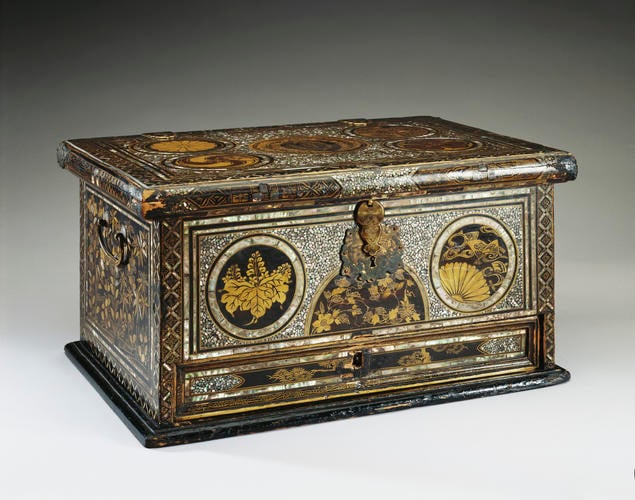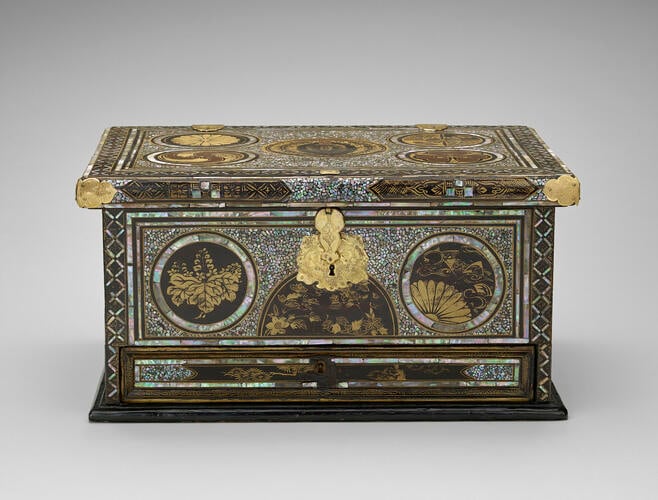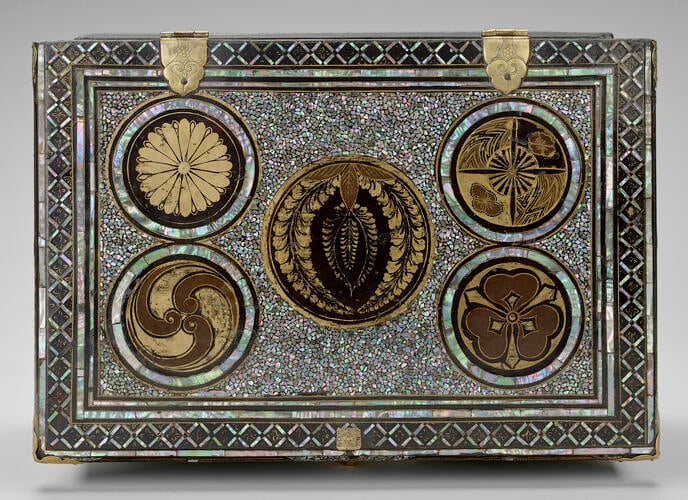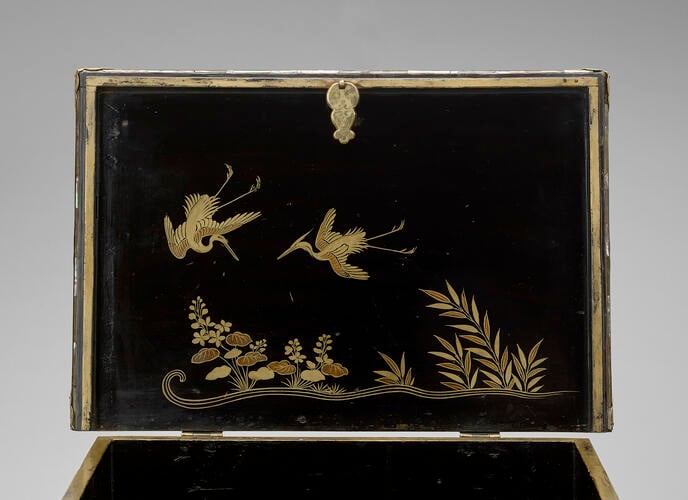-
1 of 253523 objects
Chest 1600-30
Wood, partly ebonised, black, gold and red lacquer, mother-of-pearl, gilt bronze | 25.5 x 49.5 x 33.8 cm (whole object) | RCIN 39244
-
This chest is decorated with nanban lacquer, a type developed specifically for the Portuguese Jesuits working in Japan during the sixteenth century and the first type of Japanese lacquer to be exported to Europe. It is distinctive for its black ground, inlaid with mother-of-pearl and decorated with dense designs of plants, flowers and animals. The combination of materials and the richness of the motifs was probably inspired by European taste; it can also be seen on objects produced for Europe in Gujarat on the western coast of India at that time.
At the beginning of the seventeenth century, nanban-style coffers were gradually replaced by chests of relatively small size. This chest, fitted with a flat, hinged lid and a drawer in the bottom, represents that shift in production. The most conspicuous elements of the design are the large mon (heraldic crests) of sizes rarely seen on lacquerware from this period (see the view of the top of the lid, below left). Prominent are those originally associated with the imperial family (the 16-petalled chrysanthemum), the Toyotomi clan (the paulownia), the Fujiwara clan (the wisteria) and the Nasu family (a fan with a rising sun). A tomoe crest and a wood sorrel crest also appear on the lid. On the sides, flowering shrubs in panels and a pair of gilt-bronze loop handles. The back is similarly decorated. Any one of these mon was not necessarily unique to one family. They could for instance be bestowed upon loyal subjects, exchanged as signs of respect or adopted through marriage, which is how some families came to have multiple mon, used on different occasions.
While mon were in later centuries more commonly used as decoration on commercial objects, they were still restricted to familial use at the time this chest was made for export. The chest was therefore possibly commissioned as a gift by a member of an important Japanese family who used these various mon, intended for someone possibly connected to the royal family or alternatively for the VOC or EIC. Nanban lacquer was certainly held in high esteem in Europe, and is known to have been used for official gifts.
Text adapted from Chinese and Japanese Works of Art in the Collection of Her Majesty The Queen: Volume III and Japan: Courts and Culture (2020)
Provenance
Probably acquired by George IV. First recorded at Carlton House on 22 November 1817. Formerly at the Royal Pavilion, Brighton, and sent in June 1848 to Kensington Palace: ‘A japan black and gold box inlaid mother o’pearl, engraved lock and corners &c, eighteen x twelve & a half ins. [45.7 × 31.8 cm]’ (1829A, p. 49).
-
Creator(s)
(nationality)Acquirer(s)
-
Medium and techniques
Wood, partly ebonised, black, gold and red lacquer, mother-of-pearl, gilt bronze
Measurements
25.5 x 49.5 x 33.8 cm (whole object)
Category
Object type(s)
Place of Production
Japan



